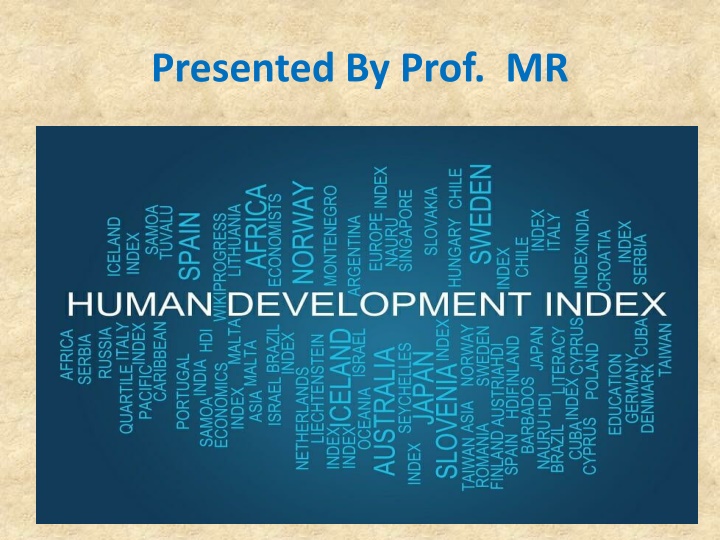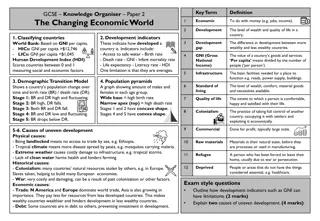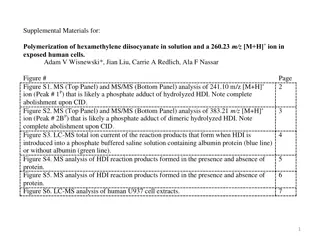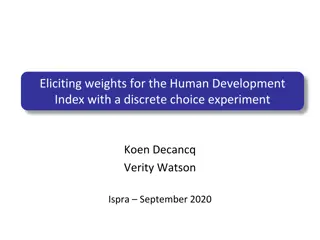
Human Development Index (HDI) and Its Dimensions
Learn about the Human Development Index (HDI), a statistical measure developed by the United Nations to evaluate the social and economic development of countries. Explore how HDI considers indicators such as life expectancy, education, and per capita income. Discover the dimensions of HDI, including long and healthy life, education, and standard of living, to gain insights into assessing a country's overall development.
Download Presentation

Please find below an Image/Link to download the presentation.
The content on the website is provided AS IS for your information and personal use only. It may not be sold, licensed, or shared on other websites without obtaining consent from the author. If you encounter any issues during the download, it is possible that the publisher has removed the file from their server.
You are allowed to download the files provided on this website for personal or commercial use, subject to the condition that they are used lawfully. All files are the property of their respective owners.
The content on the website is provided AS IS for your information and personal use only. It may not be sold, licensed, or shared on other websites without obtaining consent from the author.
E N D
Presentation Transcript
What is the Human Development Index (HDI)? The Human Development Index (HDI) is a statistical measure (composite index) developed by the United Nations to assess the social and economic development of countries around the world. The HDI considers three indicators of human development, namely, life expectancy, education, and per capita income. It is the statistics used to rank countries by level of standard of living and quality of life. It goes from 0 to 1 (1-most; 0- worst)
What is the Human Development Index (HDI)? Pakistani economist Mahbub ul Haq developed the Human Development Index in 1990. The measure is an alternative to the standard metrics of development of countries, which consider only the economic part of a country s development. The HDI provides a better picture of a nation s development because it incorporates primary social and economic factors. Also, the HDI emphasizes the importance of individuals and their ability to unleash their maximum potential. In addition to the standard HDI, there is also the Inequality-adjusted Human Development Index. The Inequality-adjusted HDI assesses the levels of human development with consideration of economic inequality. It is thought that the Inequality-adjusted HDI reveals the actual levels of human development in a country, while the HDI shows the theoretical levels of development if there were no inequality in a country.
Dimensions of the Human Development Index The HDI considers three main dimensions to evaluate the development of a country: 1. Long and healthy life The long and healthy life dimension is measured by life expectancy at birth. The life expectancy at birth is a statistical measure that an average individual is expected to live based on certain demographic factors such as the year of birth and current age.
Dimensions of the Human Development Index 2. Education This is a second dimension in the HDI. The indicators of education are the expected years of schooling and the mean years of schooling. According to the UN, the average maximum years of schooling is 18 years, while the mean maximum years of schooling is 15 years. 3. Standard of living The standard of living is usually measured by the gross national income (GNI) per capita. The GNI indicates the total domestic and foreign output created by the residents of a certain country.
Limitations of the Human Development Index Despite the revolutionary idea behind the concept of the HDI, the statistical measure is greatly simplified. The current version of the Human Development Index calculations considers only a few factors that affect the development of a country. However, other factors such as employment opportunities, empowerment movements, and feeling of security can be added to the index calculation to come up with a more accurate analysis.







